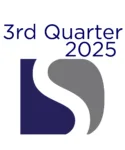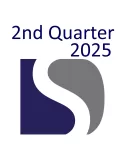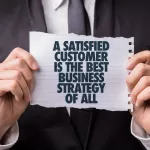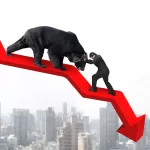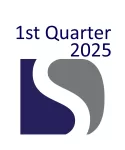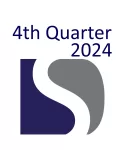There are compelling forces that influence and impact every company’s brand. More specifically, compelling forces that impact awareness, decision making, and taking action.
What are those 3-5 compelling forces for YOUR company’s brand?
More often than not, these compelling forces, or influences, are as follows: Strategic Choices (or Strategy), Your Industry, Functional Dominance, Offering & Experience, and Organizational Design.
Let’s dig into each.
STRATEGIC CHOICES | STRATEGY
There’s no doubt that price is a differentiator. It is one that involves the Prisoner’s Dilemma and a race to the bottom if there isn’t a longer term objective. Which is why, to differentiate, companies must compete on something other than price. We need to differentiate and compete on something bigger.
This is where (and why) we need strategy and strategic choices. Strategy aims towards a better future by dealing with the here and now. It sets the context at the highest level of why some things should be done and why others should not. Without true strategic choices, change tends to be incremental improvement at best and counterproductive too often. Strategy is choosing between differentiation or lowest-cost provider.
Strategy is a lot about people, too. If every part of your strategy is not explicit, then you are leaving room for unpredictability. Every change employees make either supports or detracts from the strategy.
As well, by default, strategy is an empirical description of what your leadership is or is not accomplishing.
The Beginning
The journey begins with the ambitions of your leadership team for your organization. It must be directly tied to your offering. From your understanding of your industry and your unique way of creating value, you determine where you will compete. Then, how you will triumph in spite of your competition. It involves alignment of your functional expertise with those capabilities you will need to adopt. A mindset I have embraced based on Roger Martin’s strategy framework is to find a niche that allows you to exploit a unique way of creating and delivering value that your competition can’t or won’t. When dealing with larger competitors, a grad school professor referred to it as “walking between the elephant’s toes.”
YOUR INDUSTRY
Your industry impacts everything – from supply chain to access to capital; to how your employees, your customers, and the world (as a whole) views your company.
Even though many do fall in line with the behaviors of others within their industry, your industry does not have to dictate whether you can differentiate your products or services.
I challenge you to think about industry differently, quite literally.
There are different ways to classify an industry, but the most important is the commodity to differentiation scale that is within. Differentiation is the ability to compete on something other than price. While standing out from your competitors seems hard, there are by far more ways to differentiate than being the lowest cost provider.
Which is why industry is important to any strategy. It is a different viewpoint from what people look at outside of strategy that offers unique insights because it is the working model in which you compete. It keeps ideation, innovation, and improvement grounded in reality without putting limits on one’s imagination. Your industry doesn’t mean you have to be the lowest-cost provider.
Differentiation
Though it is rare, some companies move from one industry to another over time. What is important about understanding the industry you compete in is how the companies within differentiate themselves. Knowing supply chains, cost structures, labor pool capabilities, and consumer misconceptions goes a long way in understanding how your brand is viewed and what you can do to influence that. For example: according to a Monroe Engineering survey, many consumers believe only small consumer products are manufactured in the U.S. and that manufactured products are becoming more expensive. (Feel free to learn more: Monroe Engineering Manufacturing Study.)
BIG IDEA FOR YOU:
Where, how, and when can you differentiate in your industry?
FUNCTIONAL DOMINANCE
Functional Dominance is an internal viewpoint. It sets the context of how people should interact. It’s also the basis for using resources, employee’s time, and corporate funds. It is a checkpoint of behaviors and processes of the organization as it creates, delivers, and captures value.
Productivity improvement requires fit among the functions that must work together to produce value. If one function or process is tremendously improved but doesn’t fit with the others, you really don’t have an improvement. Improvement on a company wide scale can’t be made if functions are not in alignment.
Which is why, as leaders and talent come and go, there are often attempts for one area to assert control over the others. Dysfunctionality is sure to ensue if one respective support department wrestles control. For example: It doesn’t make sense for HR or the warehouse to make production decisions.
Sometimes we confuse functions and departments. We refer to the HR department as if everyone understands all the functions it performs. What if the HR department didn’t do half of what people thought it did?
The driver of momentum and change should be directly related to your customers; that function should be someone or a team based in operations, logistics, engineering, sales, and/or marketing.
Leadership
More than one area of the company can, and often does, assert themselves in every decision. A business can run like this for some time, with some leaders actually enabling the behavior. Each area constantly fights to prove themselves as the one that the others should follow. But, it adds to confusion when leadership only backs survivors, believing that the contest is the right way to realize the best idea. Ultimately you want every function neutral to the others, relying on hierarchy decision-making. To get there, you need alignment.
Alignment begins when we examine the business we’ve already built.
Some questions to explore to know if your organization has agreed and is aligned:
- Does sales mostly take orders for items that are difficult to make or deliver?
- Does marketing describe a product or service that doesn’t naturally fit with what your company does?
- Does engineering add features and characteristics not requested from customers?
- Are identified customer issues not adequately addressed?
- Is customer service bribing customers?
- Or is customer service making excuses for other areas of the business?
- Is operations meeting cost, quality, and delivery expectations, both promised and expected?
- Does logistics match customer usage behaviors?
Word to the wise: do not have one function determine the type of company you have. To establish functional parity, customers must be accurately represented throughout the company – versus one function or area representing the company.
BIG IDEA FOR YOU:
How the voice of the customer is shared throughout your organization is the only way to put every function on equal footing. How do you utilize, share, or learn from the voice of your customer(s)? OR – is there an area or function that’s doing the taking for them?
OFFERING AND EXPERIENCE
When it comes to price competition, there are two schools of thought:
- multi-price points (good, better, best) or…
- the lowest price while still meeting expectations
While the first school of thought does require some differences other than price across the three price points, there are more interesting and innovative ways to compete.
Your offering is one of the five innovation categories – and it is a big one. Because it, along with experience, is very obvious to your customers.
An offering is the ultimate touchpoint; it gets people thinking; it starts the journey. It sets the context for the value the organization produces.
An offering is the most tangible thing a company can do to influence the behavior of customers. The experience a customer goes through is the second. A company’s continued offering will always be a result of customers’ needs or wants. Getting your offering closer to everything customers want and need is a worthwhile journey, even if you never fully reach that conclusion. Access to knowledge and the offering itself makes it easier for customers to make the buying decision. How much is the demand for your offering due to ease of access, fit for a needed solution, or the image it forms in the minds of customers?
Your offering and the experience customers have are at the core of your purpose for being in business.
What kind of company you have goes hand in hand with your purpose and while customers may explain why they buy from you, it takes in-person observations to get at what kind of company you are internally and externally. Your strategy, business model, and internal factors must meet or improve upon why people buy from you. How are you meeting expectations? How are you exceeding them? What aspects fall short?
BIG IDEA FOR YOU:
What’s your offering? What’s the experience of working with you? How can you build or refine either or both to compete in a more innovative way?
ORGANIZATIONAL DESIGN x LEADERSHIP
Organizational design sets the context of the environment in which employees will work. It and leadership are part of the foundation for operating and making things happen. Leaders are responsible for the environment in which employees work and are tasked with influencing the right interactions between employees. They are responsible for how people work together. Improvement and transformation cannot happen unless employees change individual and group behaviors. Organizational design is not unlike the institutions of a country. Not supportive enough? Chaos ensues. Too rigid? Employees will revolt.
When you change the organizational design, as a whole, you will support new capabilities, business systems, and the flow of value. Which is why it is important to prioritize organizational changes with this main idea: it’s a new way to perform work. That can be a hard idea to sell to your employees. When employees change the way they work, they don’t necessarily change their beliefs in how others, or they themselves, go about their work. They need someone to lead the way. Leadership is needed as new policies and processes are being implemented, to help everyone come to a new understanding together.
While these two factors – organizational design x leadership – need to be ‘synced’ together, this is really about internal consistency and strategic alignment. Keep in mind that you can’t fulfill strategic choices without alignment, but you can achieve growth and productivity with internal consistency.
BIG IDEA FOR YOU:
Historically, how has your team or organization responded to organization design or (re)design? What’s worked, or hasn’t worked? How has leadership helped or hindered the change and/or growth? Were the reasons for changing design due to a specific outcome or in support of a strategic choice?
IN CONCLUSION
These categories will always be key to influencing your brand. Their significance will individually vary over time. For example, once you are operating where you need to be within your industry, understanding that position against all the other factors is a constant in decision-making. It’s the same with functional dominance – people will come and go. Some leaders will be stronger than others and will try to fill voids in other functional areas in addition to their department. (I’ve seen HR running operations de facto.) Instead of challenging themselves on getting the required number of employees to handle peak season, they decided to cut production based upon the number of employees they thought they could hire.
Thinking through these influences regularly provides a measurable way to see how well your organization is performing at the right level. What makes it fun is that it’s wide enough to see throughout the organization and close enough to where the value is created and delivered to be laser focused in the right places. Which means that these four areas allow leaders to make the most efficient and effective changes because they are what are absolutely controllable.
The bigger lesson here is this: This work matters because it involves everyone. Not just leaders – not just people doing value creation. Everyone.
Which begs a bigger question: is it these processes or the people involved who are the true compelling forces?


